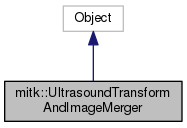Merges a directory of images and tracking data into a .mhd file, according to PLUS meta-data specifications.
More...
Merges a directory of images and tracking data into a .mhd file, according to PLUS meta-data specifications.
This takes each 2D slice, and stacks them into a 3D volume. It writes the data out as a .mhd file. .mhd files have the binary image data in a file ending in .raw, and .mhd is an ASCII header. Therefore PLUS have specified additional information to be stored in the header. This additional information pertains to tracking information collected at the time the images were grabbed. The tracking information normally comprises the probe-to-tracker transform, the reference-to-tracker transform and the stylus-to-tracker transform. For our purposes, we just want to get the data into PLUS to use, for example, the fCal calibration or the temporal calibration. So, inputMatrixDirectory refers to a directory full of probe tracking transformations, giving the probe-to-tracker transform. The reference-to-tracker and stylus-to-tracker are set to identity.
Furthermore, NifTK will record tracking and image data at whatever framerate the devices support. So, this method takes an image, and will interpolate the timestamps of the tracking data, and hence interpolate the transformation matrices.


 1.8.8
1.8.8